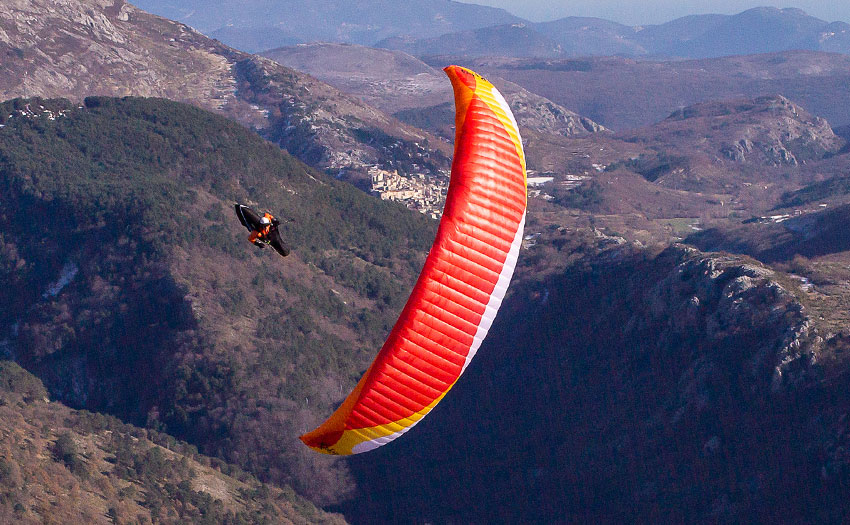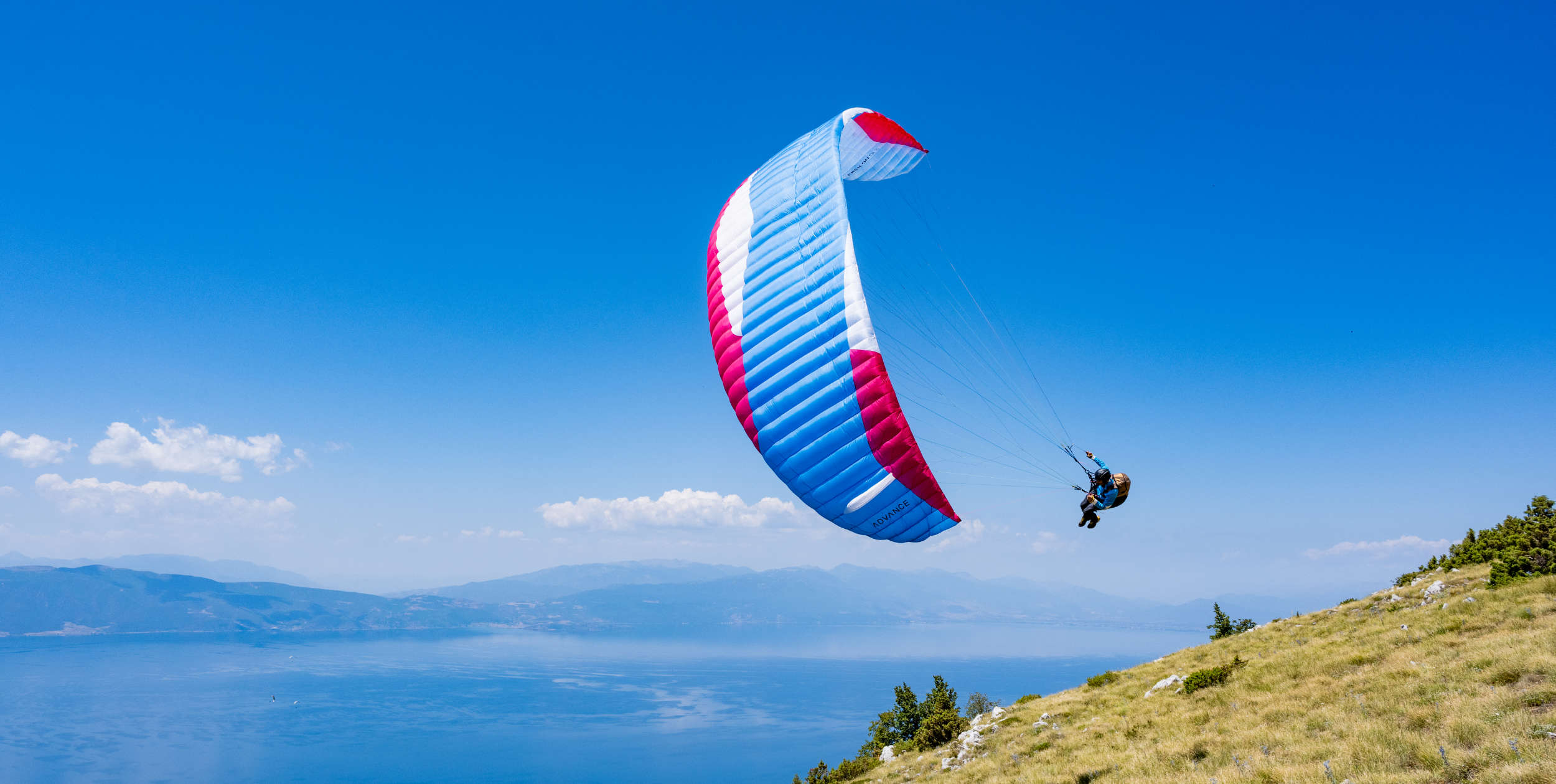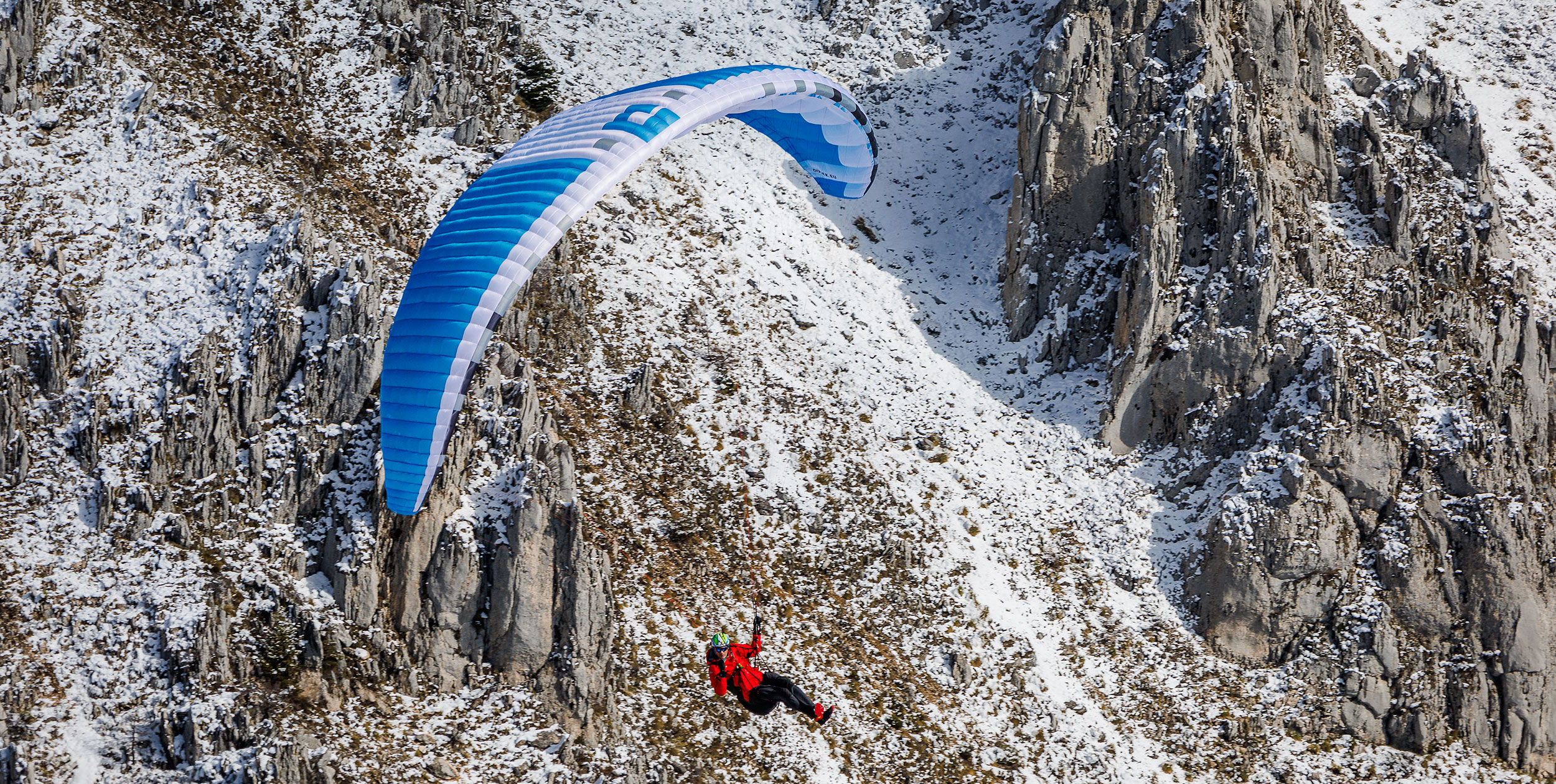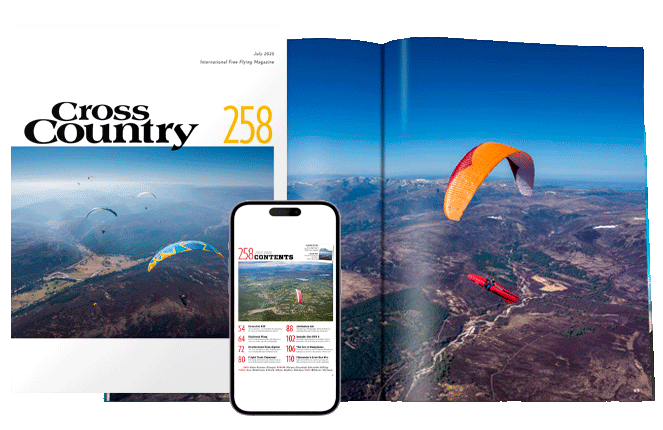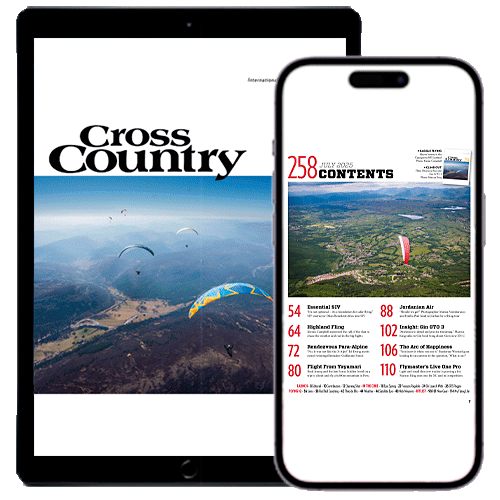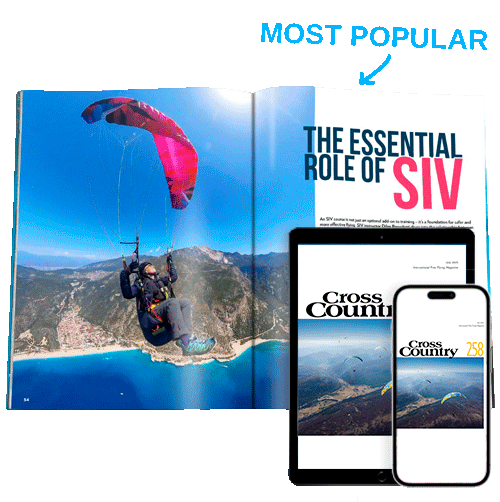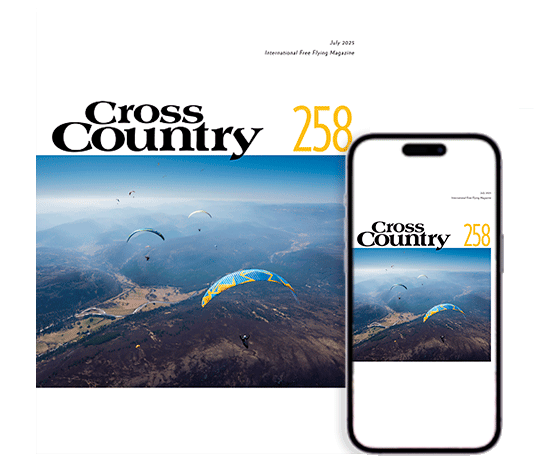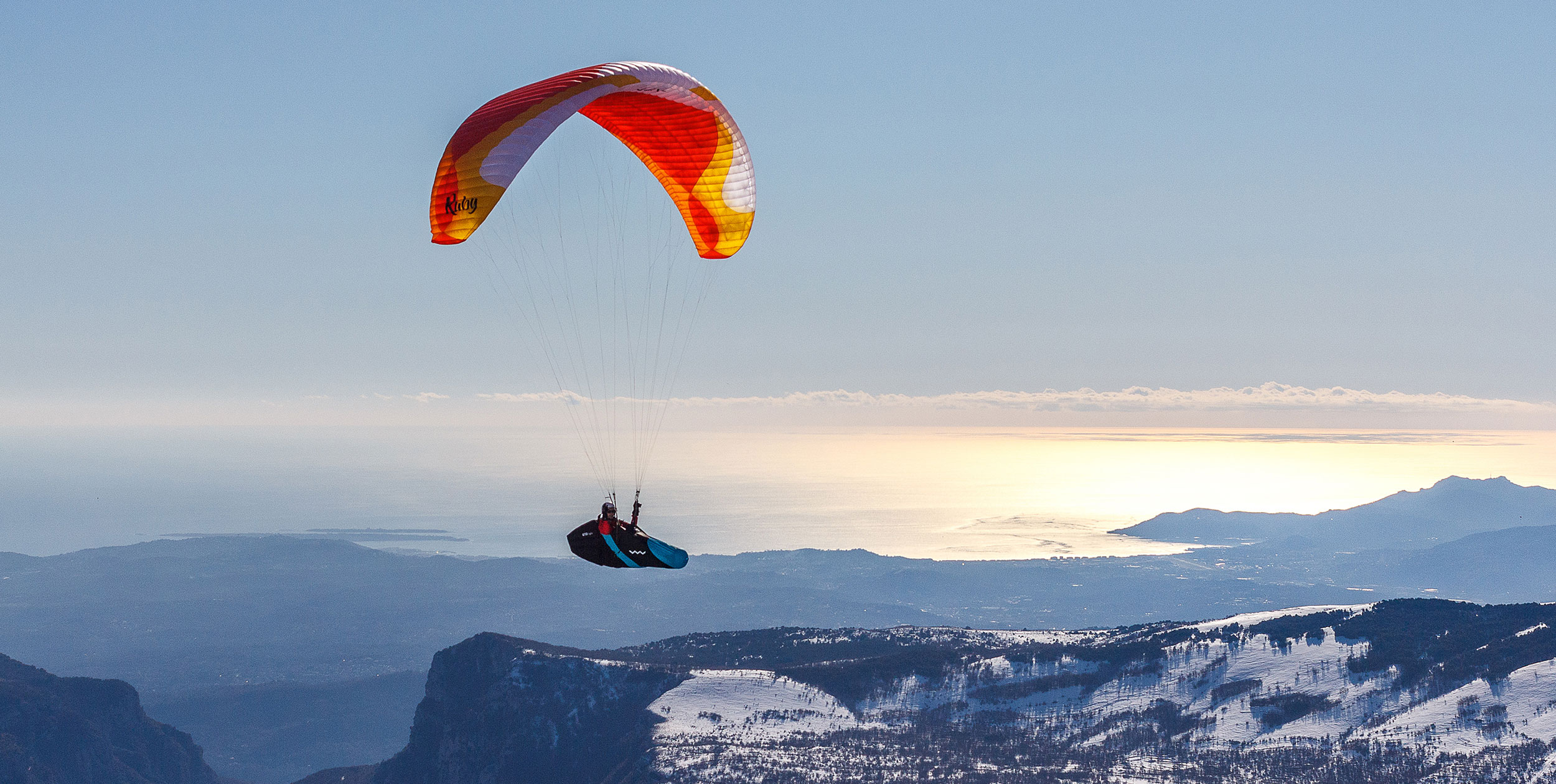
An EN B+ at a direct-sales price. Marcus King clicks for delivery
Ten second review
Although the Ruby may lack some of the latest technology it’s a solid performing, well-built wing that inspires confidence – at a price that makes getting a new glider much easier. You buy it direct through the company’s website.
Background
Way Gliders was founded in 2016, when acro pilot buddies Cyrille Marck and Julian Luttringer decided they wanted to learn how to make wings. Their first paraglider was an acro wing, but they have since started creating cross-country and freestyle wings – that they sell direct to pilots, without using a network of dealers.
That may not sound revolutionary in 2021 when Amazon rules the world, but for paragliding it’s breaking the mould. Cutting out dealers often means cutting out schools, and that means they lose a chunk of their income. No glider sales means no schools which means no new paraglider pilots, is the argument against selling direct. Plus, there is no local dealer support for pilots.
Last year Cyrille told us they don’t want to compete with the big brands, but are instead aiming at pilots “looking for a deal or a secondhand wing”. Cyrille has worked in his father’s school in France as an instructor and feels he knows the market and that there is space for this level and type of wing.
The wings are made in Niviuk’s factory in Vietnam where, Cyrille says, “Niviuk help us not to reinvent the wheel”. Niviuk has not invested in the company, he adds.
The Ruby is Way Gliders’ latest wing and is a lightweight EN B+. It sits above the Lacy (EN A) and Cosy (EN B) in the range. They have no plans to create EN C and D wings, but a tandem is due for release later this year. Alongside these are the Foxy (EN B, freestyle glider), and the Sexy 2, an acro wing.
First impressions
The first thing I noticed when I pulled the wing out of the box is the weight. At just 3.7kg for the size 25 (24.5m2), weight range 80-100kg, that makes it a proper lightweight wing. It’s similar to the Ozone Swift (MS) for example, which is slightly bigger at 25.16m2 and weighs a fraction more at 3.77kg, but covers a slightly lower weight range topping out at 95kg.
Way have used well-known cloth, with Porcher 27g/m2 on the top surface and 32 on the leading edge. The lower surface is made from Dokdo. This material mix is similar to that used by Niviuk in their wings, so there is no scrimping in terms of material to keep the cost down.
To be honest I had expected the Ruby to be a rebranded Niviuk, but looking at the spec sheets it is obviously a different design. When you open the wing that is even more obvious. Like Niviuk’s new Ikuma 2 (EN B) the Ruby has an aspect ratio of 5.7; the Ozone Swift is 5.5 and Advance Xi is 5.6. The Ruby shares a similar cell count to the Xi and Swift with 57 cells compared with 61 for the Ikuma 2.
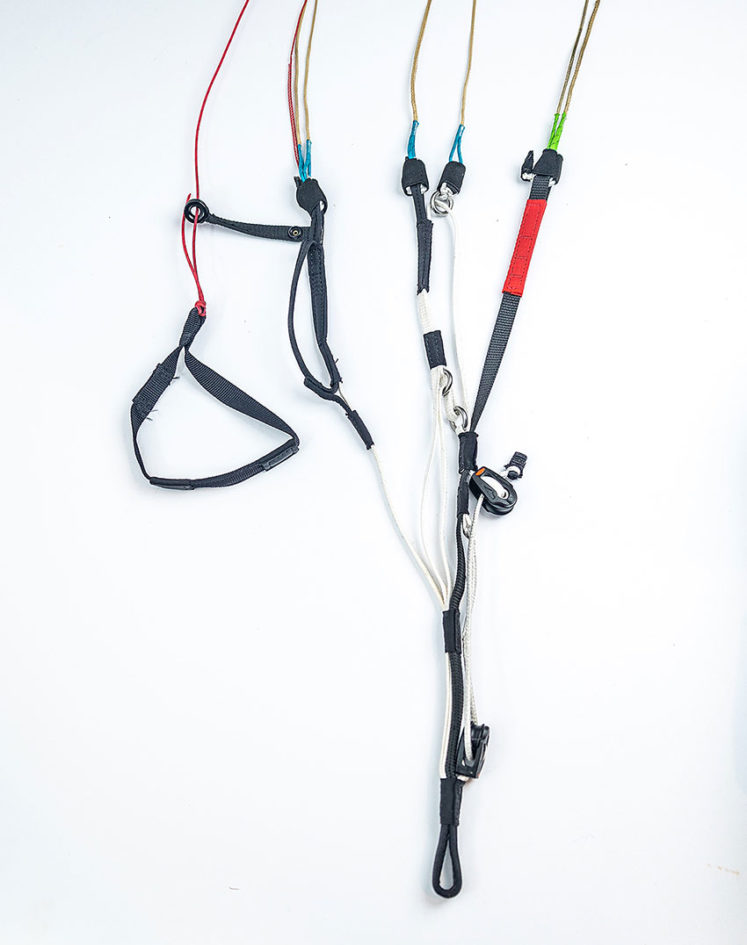
Design and build
Looking deeper, the cell openings have a curved shape and a sharknose profile. There is a single straight seam for the 3D-shaping, unlike some of the latest wings that use double seams with a zig-zag. Cyrille says they take care to use the cloth so the tension is always in the same direction as the fibres, and the result does look clean. The leading edge shaping is helped by the use of nitinol rods, again a premium material. At the trailing edge there are standard mini-ribs.
The lines are all unsheathed, with the exception of the lower part of the brake lines which is a mix of Edelrid and Liros. There are just two main lines on each riser and a three-riser set-up: the C-lines split to D-tabs in the centre of the wing. This means there are no extra support wires needed across the chord, which helps reduce weight and packing size.
Risers are lightweight Dyneema with soft links to attach the lines. They are relatively simple with no B/C connection for controlling the wing on the rear risers as has become popular. The brake lines run through ceramic rings rather than pulleys. Handles are unpadded webbing with no stiffening – super light, but this can make them a bit hard to get hold of and I found them slightly small. The micro-poppers used to attach them are rather infuriating. Another minor annoyance is the speed system does not have Brummel hooks, so you have to use a larksfoot to attach the speed-bar line.
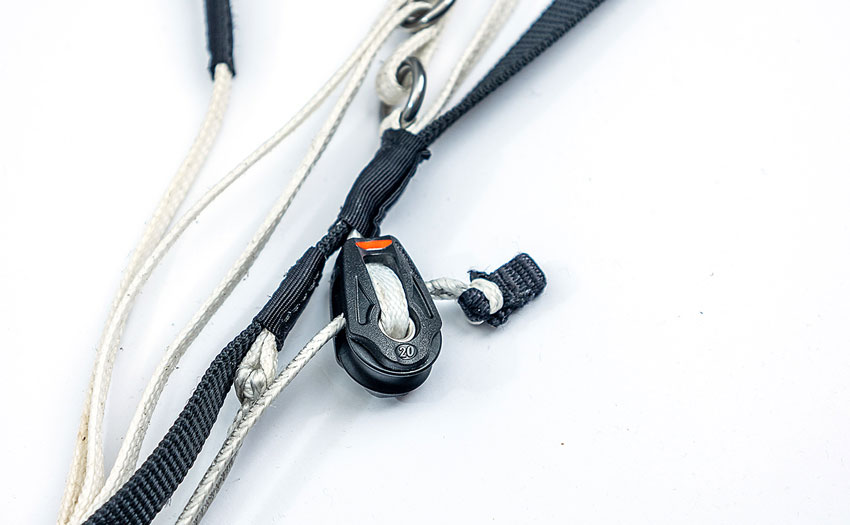
As you would expect from a product built in the Niviuk factory everything is well finished; it certainly doesn’t look cheap. I asked Cyrille about the price and he told me the only cost savings come from selling direct. “The price difference between a Way and a normal glider is the dealer’s margin.”
Comparing prices is always difficult for us because prices change by country depending on sales tax and other factors. But the price of a new Ruby on the website for EU pilots is €2,650 plus delivery. In comparison, comparable new EN-B gliders listed on Paratroc, the French online paragliding shop, include the Advance Xi at €3,757, Ozone Swift 5 at €3,429 and Niviuk Ikuma 2 at €3,485. Local sales tax and/or import duty will apply outside the EU, and this is typically 20% or more, but you can see that the price point for the Ruby is, as they say, aggressive. Price is by no means everything, but it is something, and if they’re in the EU then price-sensitive B pilots will be taking note.
Launching
As you would expect with an EN B it is well behaved on launch. It comes up smoothly and steadily with the lightest pressure. It doesn’t race overhead but there are no sticking points either, it’s all very relaxed. Perfect for tight mountain take-offs where you may not have much space to move around.
In any reasonable breeze I could pull it up just by stepping back quickly to pressurise the A’s, although I recommend you launch as normal. I did a few forward launches with light wind and even with a bit of a tailwind. In all cases the wing rose quickly overhead within a few steps with no real input needed.
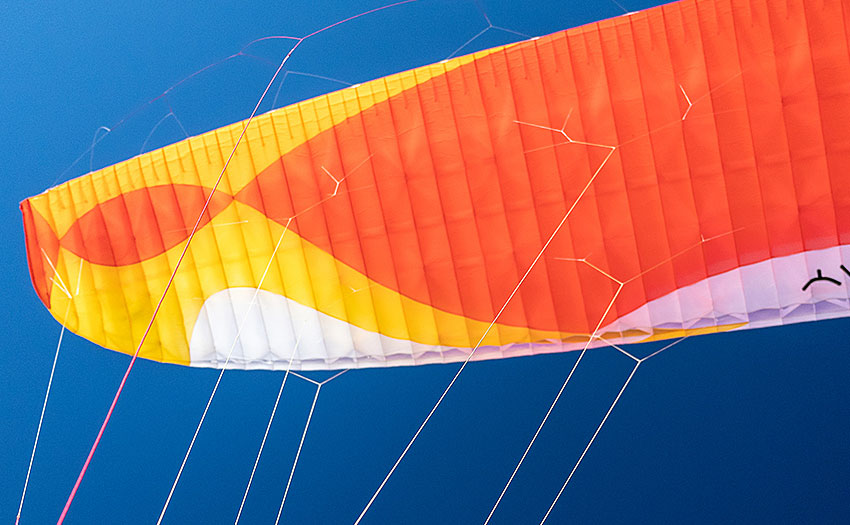
In the air
That ease of use is evident as soon as you are in the air. This is not a twitchy wing with lots of movement. In fact there is really very little movement in pitch, roll or yaw. My last couple of flights were in pretty ‘fumante’ air as they say here in France, with thermals up to 5m/s on the south side of the snow-covered mountain with a northerly wind blowing over the top.
Despite these conditions I didn’t need to catch the wing massively, and it coped well with flying out of the strong lifting air into the strong sinking air when I had to leave thermals.
In climbs it is easy to place the wing where you want. Brake pressure is positive enough without being tiring: you’ll be able to fly all day. I was flying pretty much at the top of the weight range and placing the wing where I wanted was easy, with good reactions to the brakes. You can lean on them when you need to and there was never any sign of getting close to the spin point. Adding a dose of weightshift will help kick it round but it doesn’t need much. Once turning there is no tendency for it to get tipped out, it keeps its bank level nicely.
Feedback is pretty subtle through the brakes, but is there. I also found a good level of information coming through the harness. It doesn’t jolt you around like some wings, but you can feel pressure differences to help you map where the best lift is. Combined with the easy turning behaviour it’s a very undemanding wing to fly; I would place it at mid-B level in terms of demand.
“A performant wing doesn’t have to be demanding, and the Ruby is still in the EN B category, not C,” Cyrille said. “The Ruby is precise and agile in thermals and this is the most important thing to us.” I certainly can’t argue with that: the wing performed well, showing a good climb rate compared to other wings around me despite me being at the top of the weight range. More importantly, it is fun to fly and you will find yourself relaxed under it.
Cyrille said: “The most interesting part of the design process is just flying the wings and asking yourself, ‘do I enjoy flying with it?’ I think we take too much interest in the numbers and the details and don’t think enough about the purpose of our toys: to just fly!”
Going on glide
As I had the wing during the winter months, and with Covid restrictions making things difficult, I didn’t it on any long XC flights. However, I was able to fly short circuits. On glide the wing feels nice and stable, even at full bar, which gives a reasonable 11-12km/h extra over trim speed measuring with the GPS.
Although there is no B/C link there are handles on the rear risers. I found them a bit small and, because there is no stiffening in them, a bit hard to get hold of. I only really used them for mild steering inputs as there wasn’t much pitching. It’s a shame you can’t really use this glider to start to learn this technique, but the wing was rock solid on bar anyway.
On glide the wing doesn’t get pushed back when going into wind. It hasn’t got the charged feel of some higher-class wings but does cut through the air nicely. I did feel the wing was a bit slow though, albeit with a very good glide. When I queried this Cyrille said, “We think that safety and glide angle are more important than pure GPS speed. We think people who need more speed are flying EN C and D wings anyway.”
Despite only having two main lines on each side, big ears are easy to pull and don’t flap around. Adding speed bar gives a nice descent rate with good forward speed for escaping lift. Once released they roll out easily.
The fun side
Although being a lightweight XC wing the glider does still retain a fun side. Wingovers and spirals are easily controlled and I found it tolerant of poor timing. It’s not a wing that will take you by surprise but with good timing and technique you can get above it quite easily.
I induced a few 50% and 70% collapses. I am not an EN test pilot so am not always getting the perfect angles on them, but the wing behaved well. When held in it was easy to fly straight with counter-weightshift. When released they rolled out rather than banged out and did not unsettle the wing. Apart from those, I only had a couple of very minor tip tucks early on, which were non-events.
Conclusion
This is a very capable cross-country wing. Way bill it as the wing to fly your first 100km on and it certainly fits this criteria, with good performance and that easy-to-fly nature. It may not be as fast as some of the top EN Bs and it lacks the latest B/C steering, but Way have traded that off for comfort and ease of use.
Importantly, there is no sign of it being made on a budget and it uses the same materials as most top wings. As said, the savings come from buying direct. However, that also means you don’t have a dealer to turn to when things go wrong, or an experienced voice to help you out. But the price lowers the bar for new gliders and will appeal to pilots who are looking for a deal.
Marcus flew the Ruby 25 (80-100kg) in the southern French Alps at around 98kg, paired with a Woody Valley GTO Light.
Manufacturer’s SPECIFICATIONS
Way say: “A dedicated XC wing – for your first 100km flight!”
Use: Soaring and XC flying
Pilot level: Intermediate and above
Flat area (m2): 21.0, 23.0, 24.5, 26.5
Take-off weight (kg): 55-75, 65-85, 80-100, 95-115
Glider weight (kg): 3.3, 3.5, 3.7, 3.9
Cells: 57
Flat aspect ratio: 5.7
Certification: EN B+
Price: €2,650
Published in issue 218 (April 2021)


